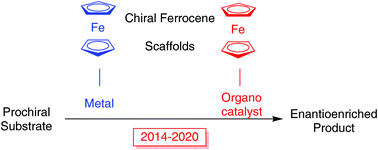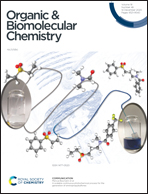Recent developments in the synthesis and applications of chiral ferrocene ligands and organocatalysts in asymmetric catalysis
Abstract
With the ever-present need for novel asymmetric methodologies in organic synthesis to allow chemists to access enantiopure compounds, so too is there a need for new chiral ligands and organocatalysts to affect these transformations. Due to the unique properties of ferrocene and its derivatives, ferrocenyl compounds are unsurprisingly considered privileged structures in asymmetric catalysis. The versatility of the ferrocene moiety gives rise to a vast range of diverse ligand and catalyst motifs which are successful in broad ranges of mechanistically distinct reactions. This review details recent advances in the application of ferrocenyl mono-, bi- and tridentate-ligands and ferrocene-derived organocatalysts in asymmetric catalysis. Given the necessity for the development of new approaches to expand the scope of ferrocenyl ligands and catalysts, this review also illustrates the development of elegant and novel methodologies for the synthesis of ferrocenyl compounds.

- This article is part of the themed collection: Catalysis & biocatalysis in OBC


 Please wait while we load your content...
Please wait while we load your content...